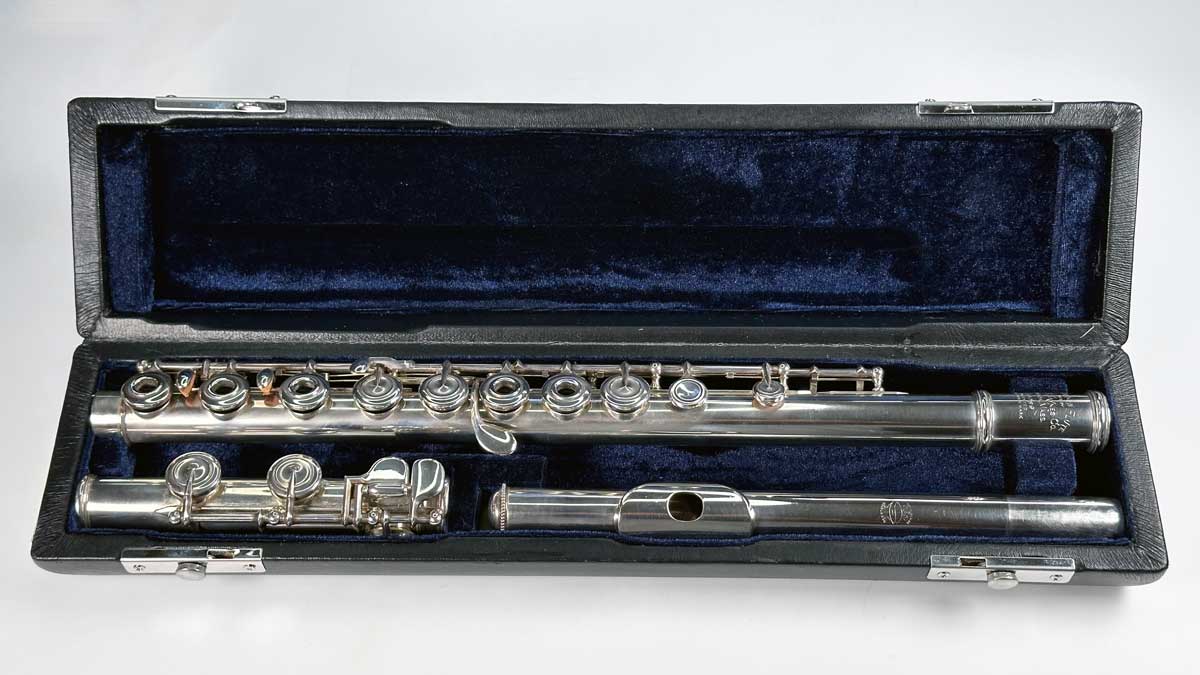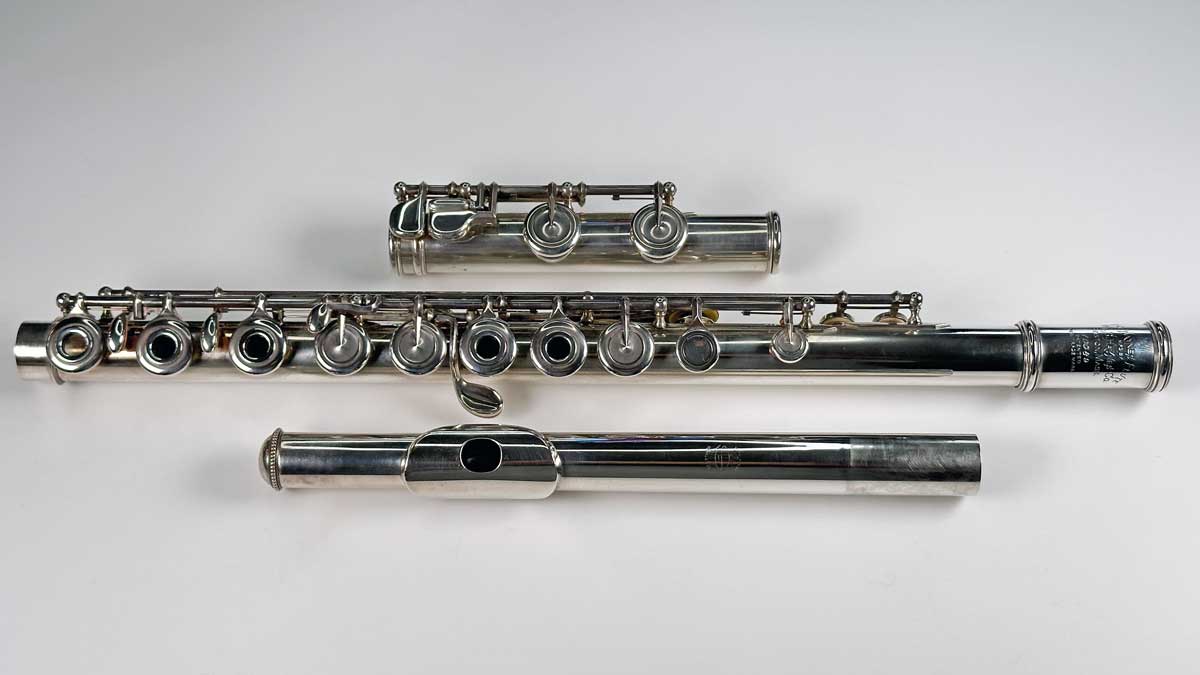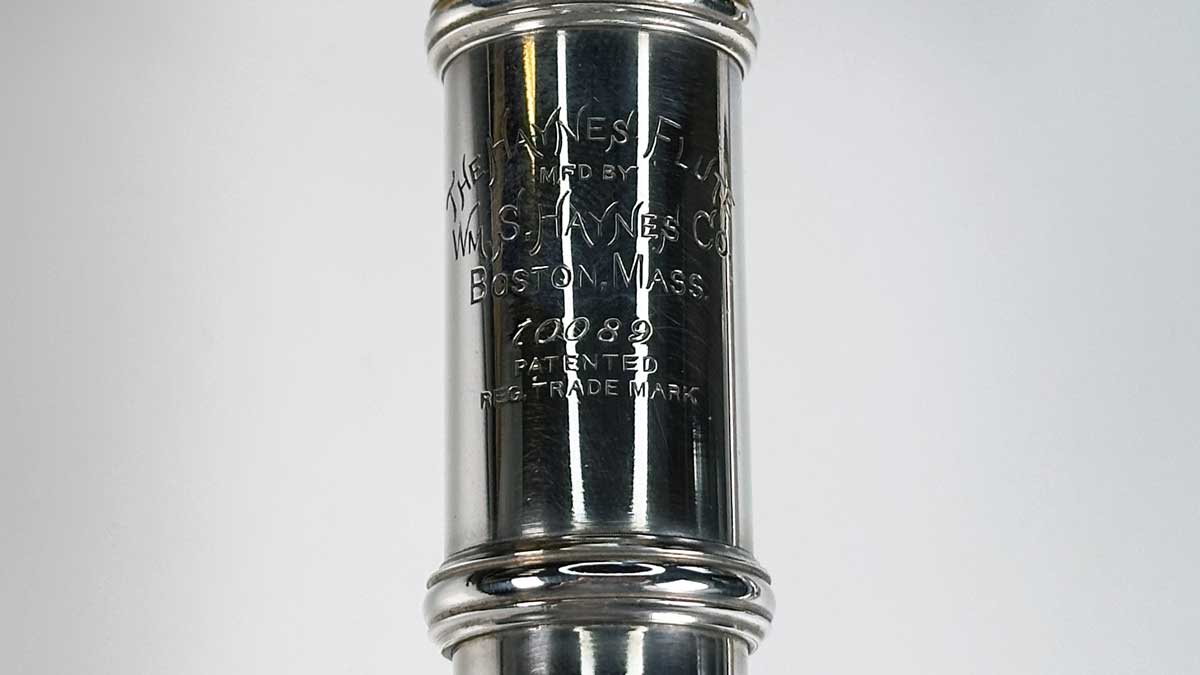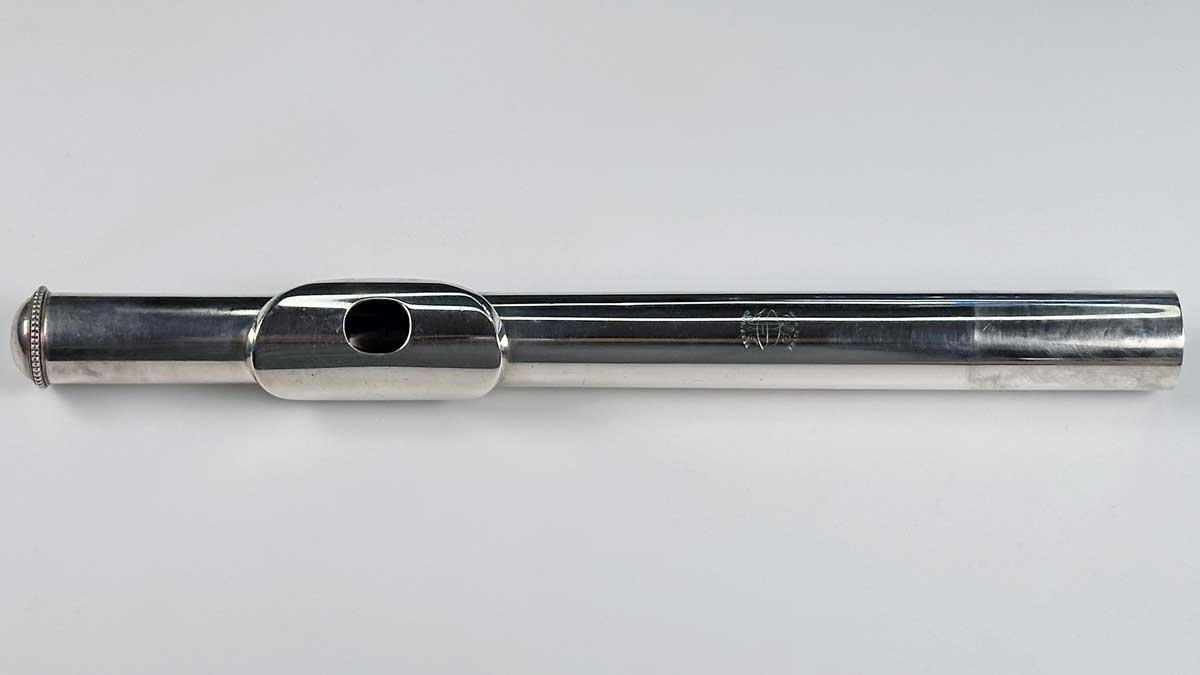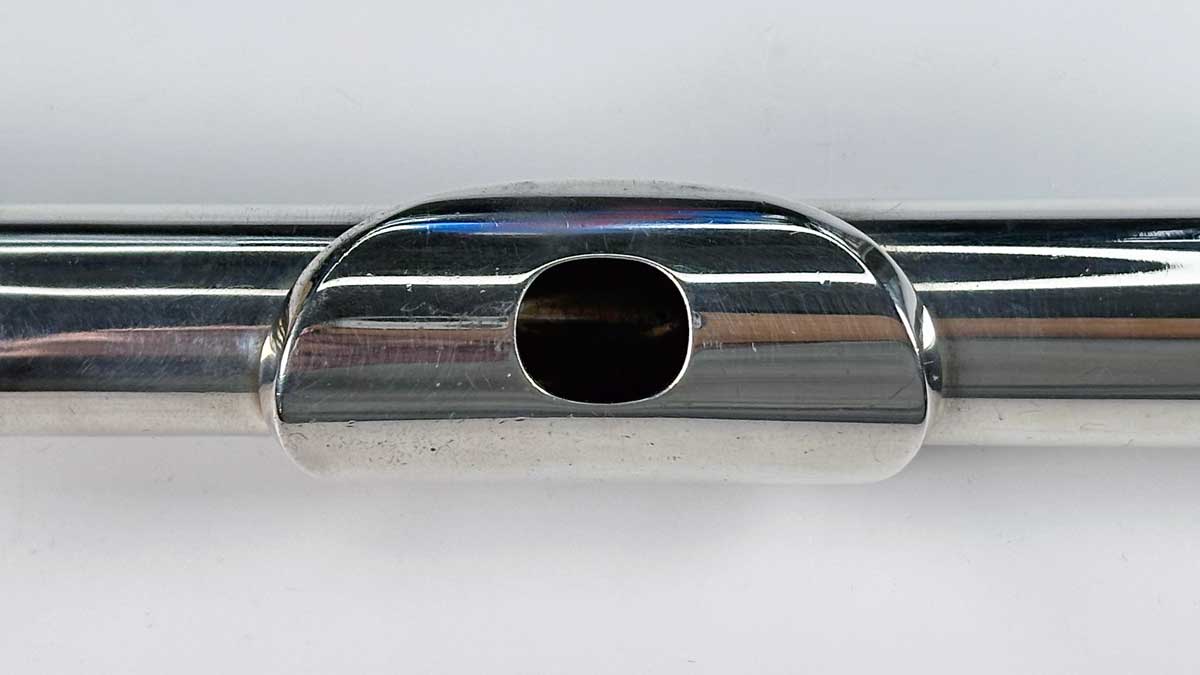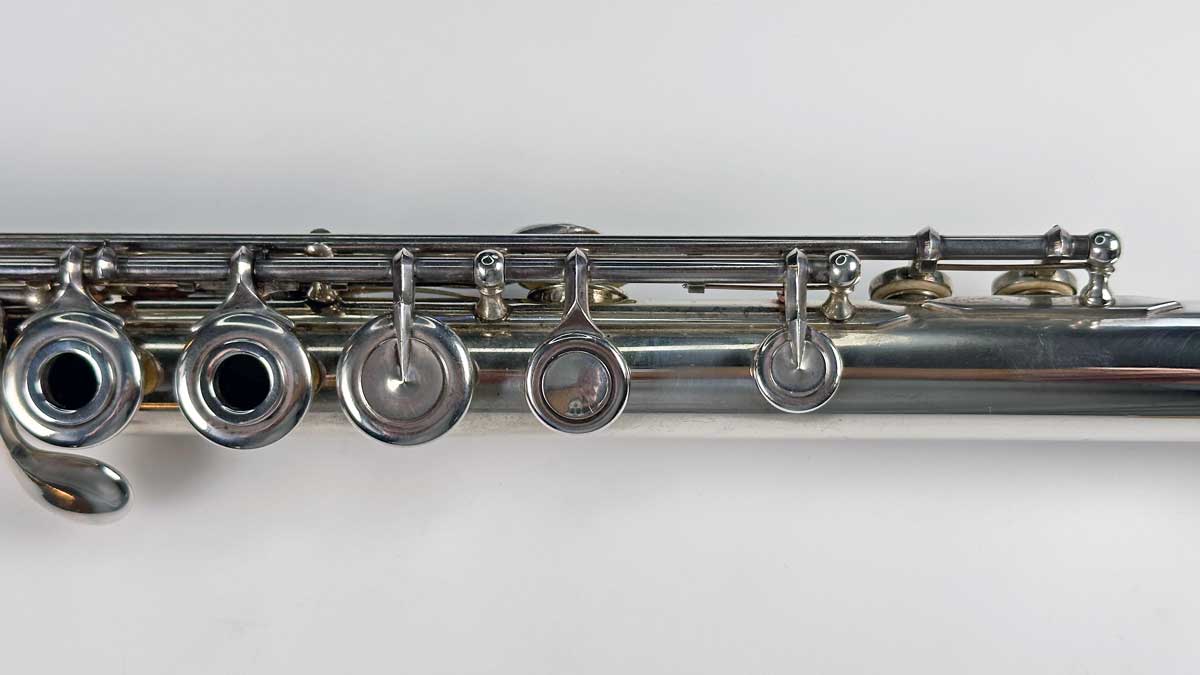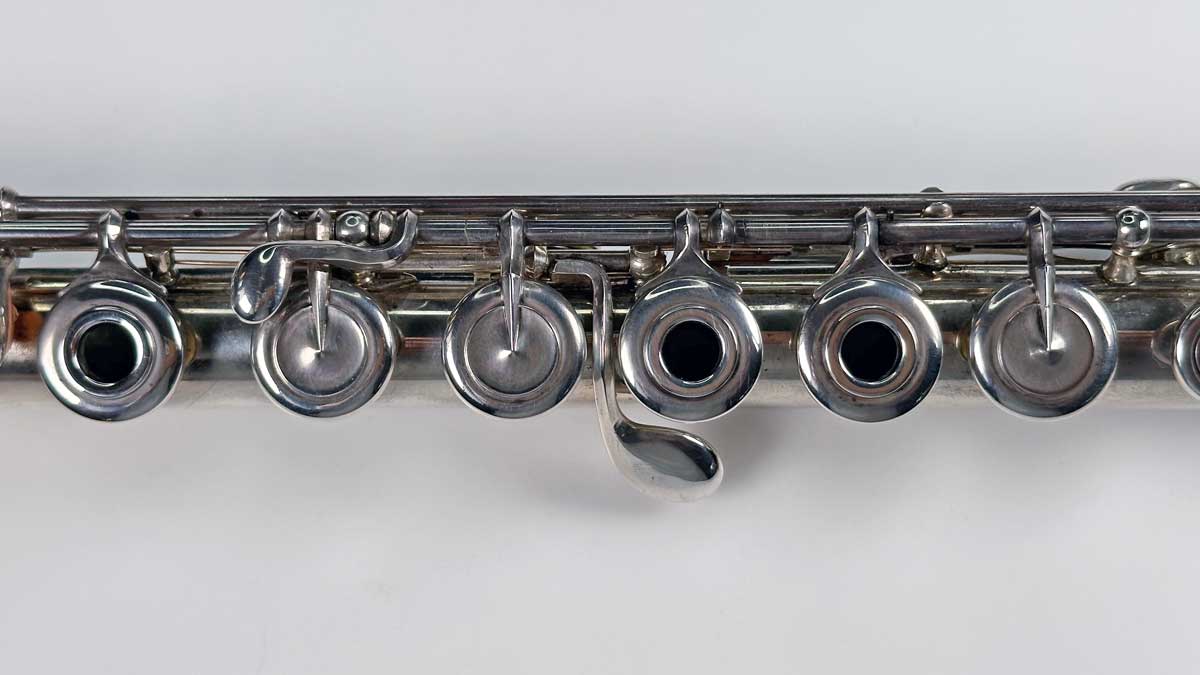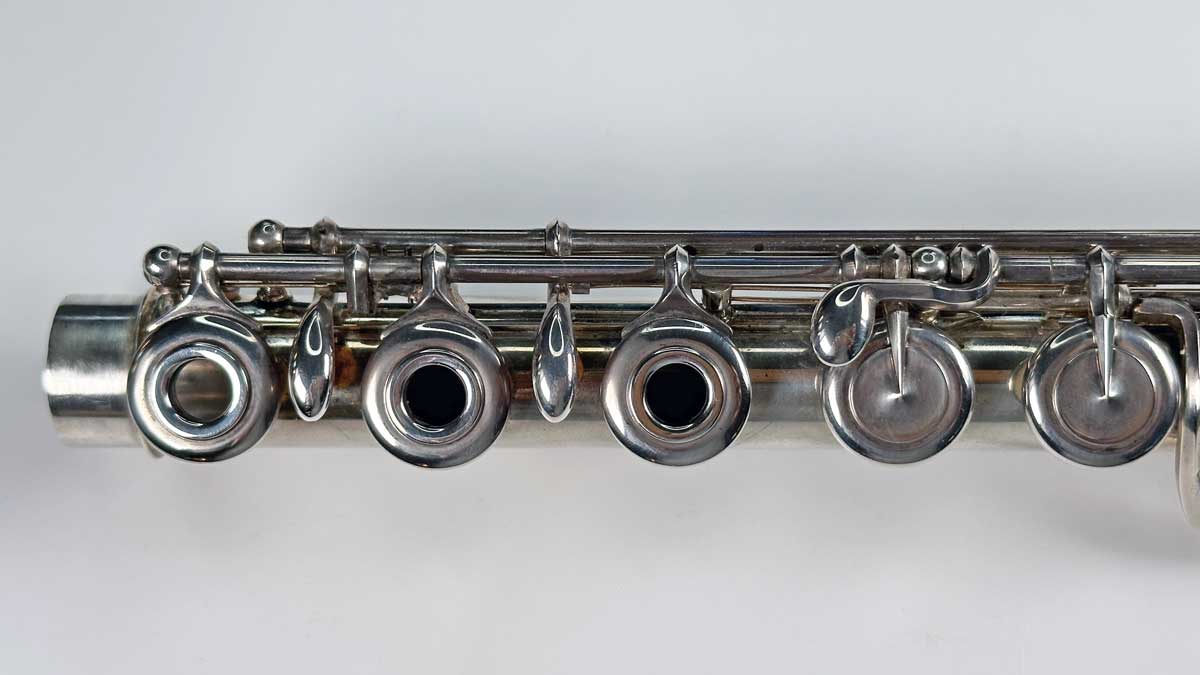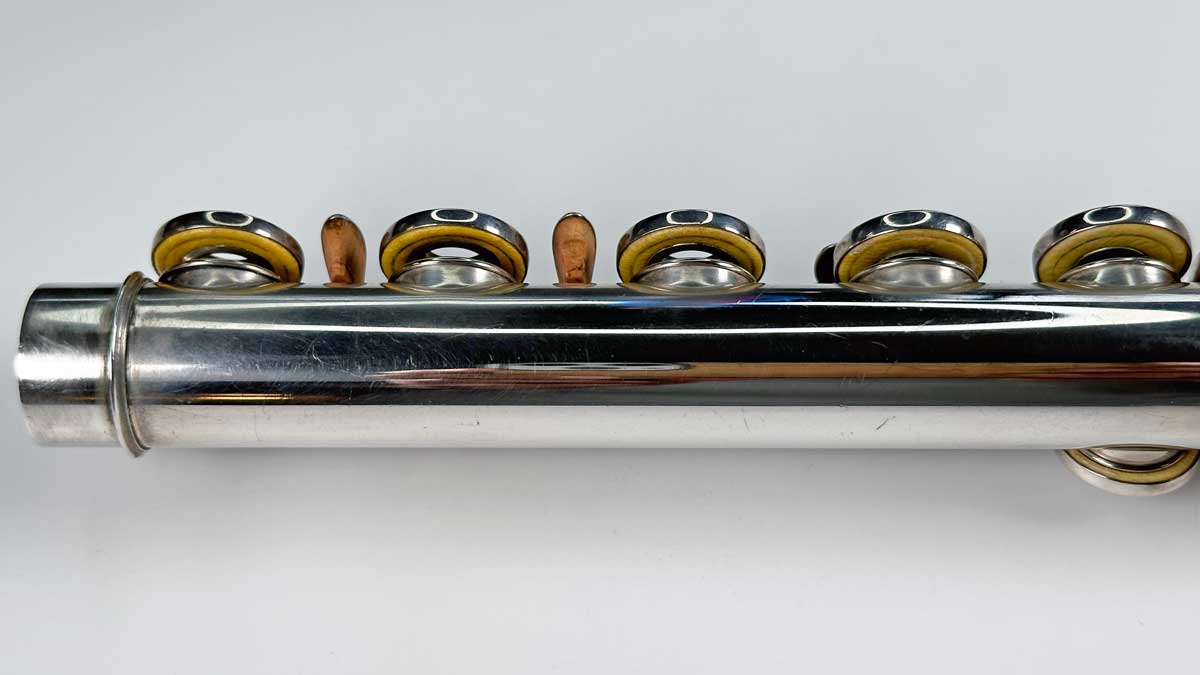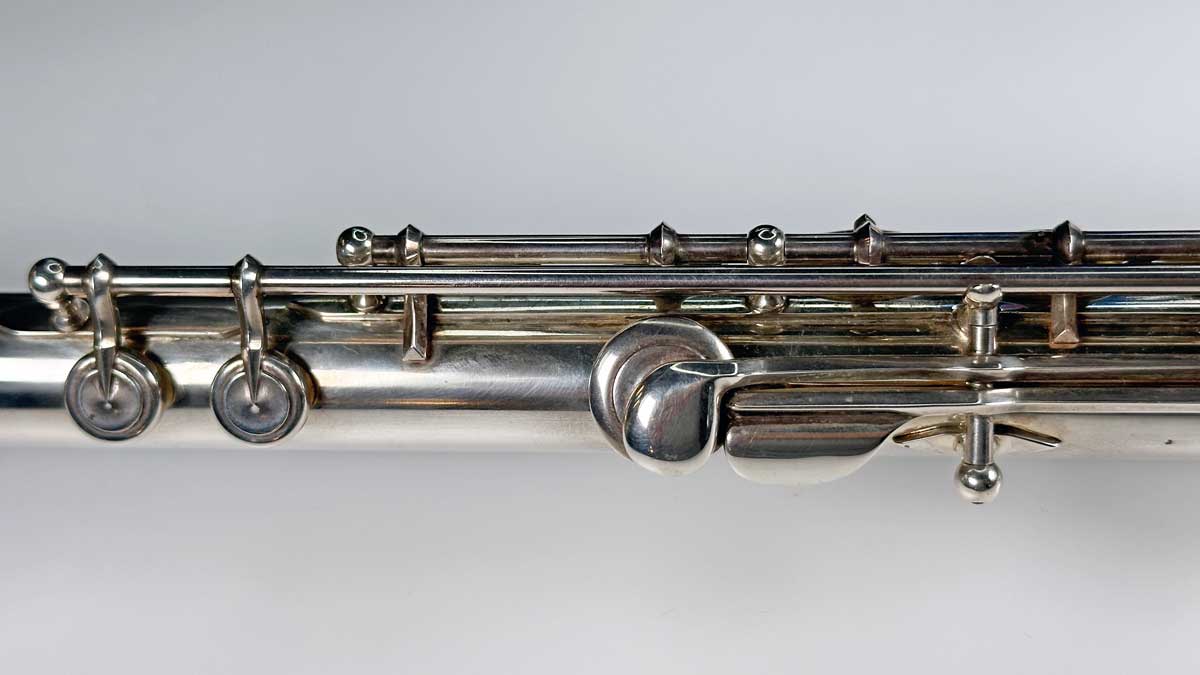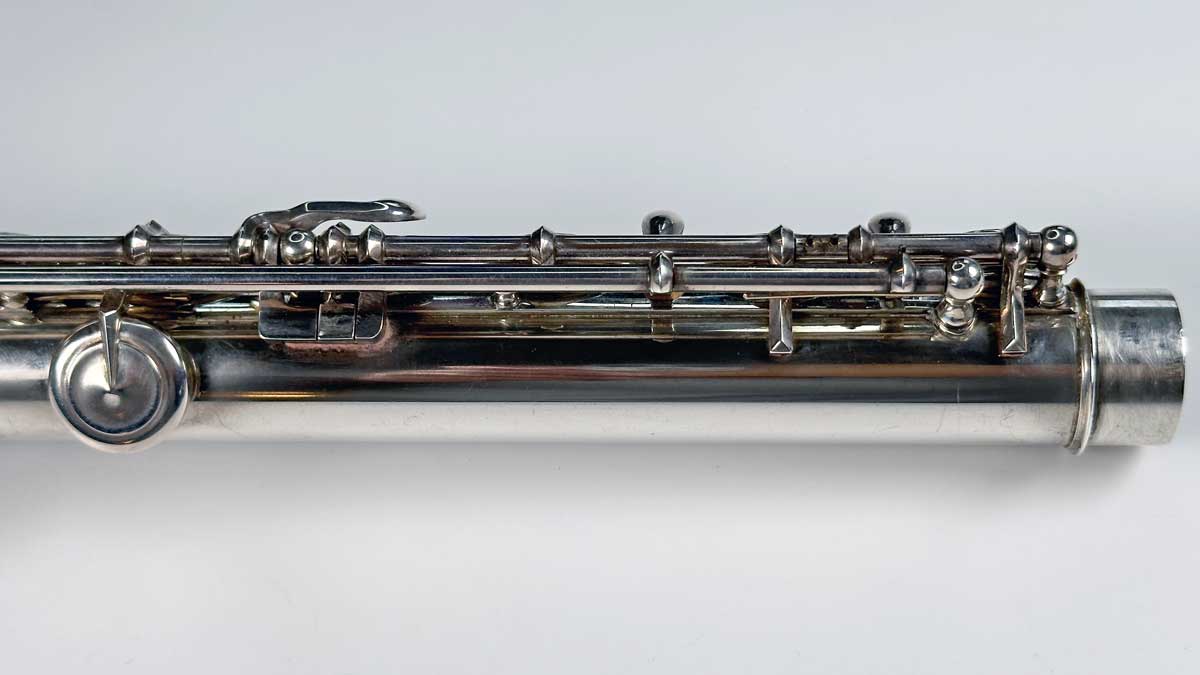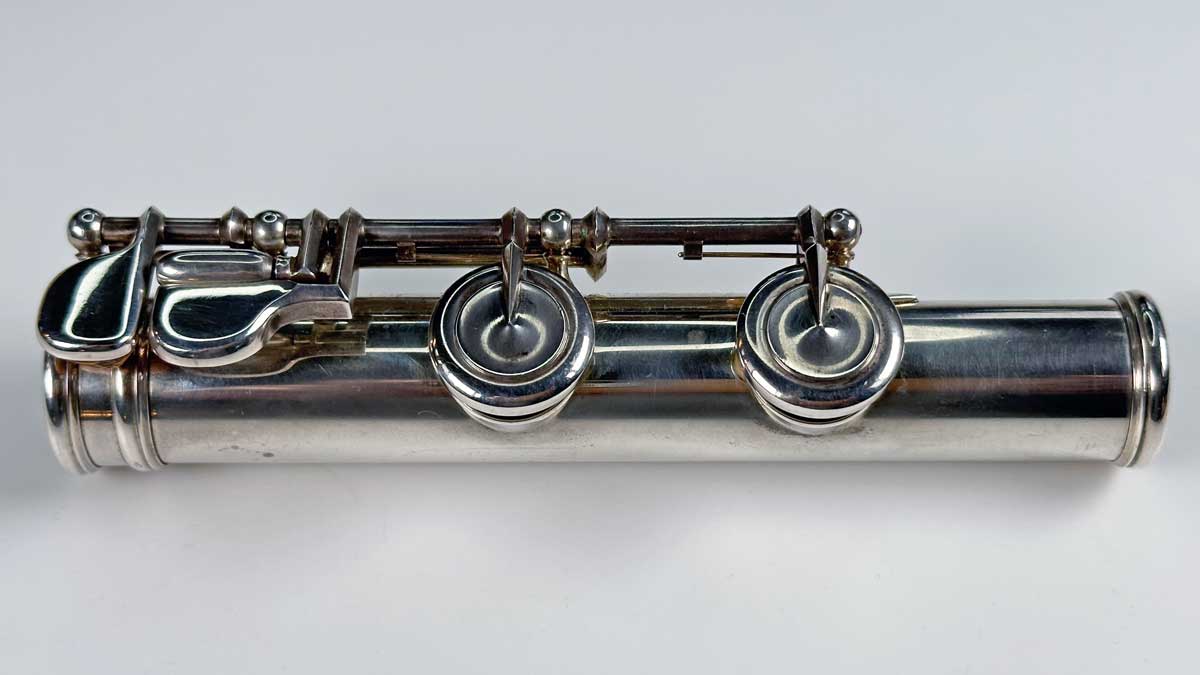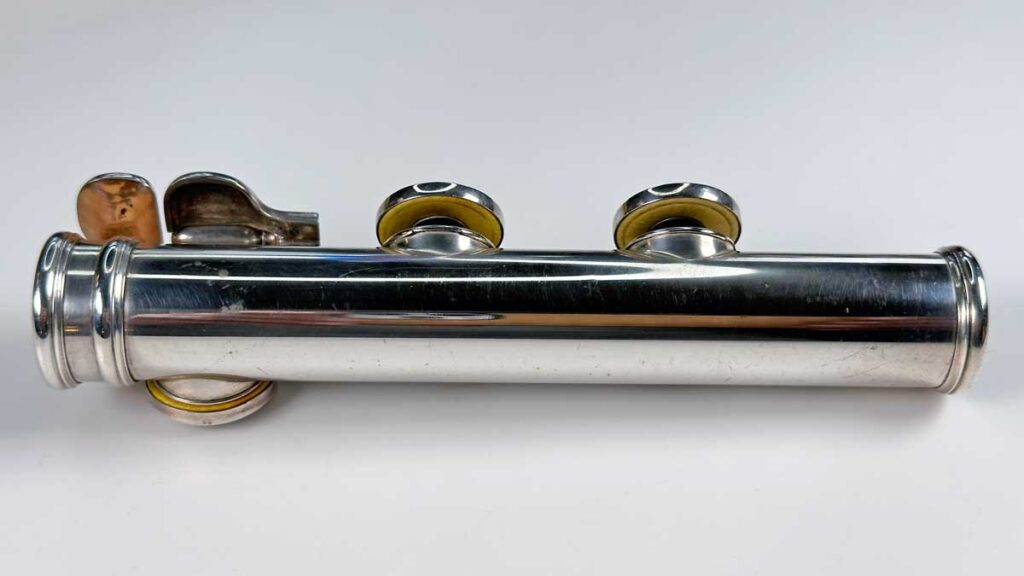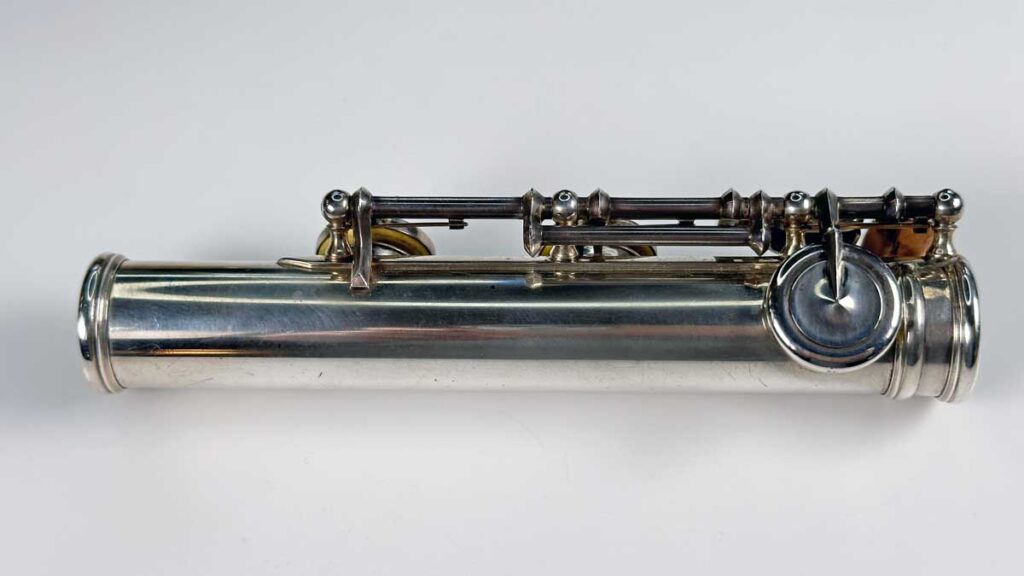- Completed on January 10, 1928 in Boston
- French model
- Silver, 0.013″ tubing
- Drawn tone holes
- Open hole
- Pointed keys
- Inline G
- C-foot
- Embouchure: 10.35 mm x 12.22 mm
- Embouchure height: 0.182″
- Weight: 383 g
- Headjoint sounding length: 153.5 mm
- Sounding length: 600.5 mm
- Traditional scale
- A=440 Hz
DRAWN TONE HOLES – AN AMERICAN INVENTION
Drawn tone holes were invented by George Haynes (brother of William S. Haynes) in 1898 and put into production by Wm. S. Haynes Co. in 1913. Wm. Haynes considered the drawn holes a major improvement as there was no longer any risk of leaking tone holes from deteriorating solder. He also felt the tubes would vibrate better when the tone holes were integral to the flute.
Wm. S. Haynes Co. started making a “Barrere model” commercial, open hole flute by 1918, possibly earlier. They experimented with a pointed-arm French model flute as early as 1925 but did not put this model into production until after Verne Powell left the company in 1926.
Although George Haynes was working in a different division of the Haynes corporation, Wm Haynes requested that he temporarily fill in Powell’s absence to assist with the production of their professional-quality French flutes (starting in the late 9000s serial numbers). These flutes featured drawn tone holes, extremely thin walls (0.010″), and pointed keys. However, drawing holes from such thin metal was difficult; many flutes had small faults that needed to be carefully repaired by hand. They soon changed to 0.013″ wall tubing, such as found on 10,089, but the process remained difficult. Within several months after this flute was made, the Haynes company returned to soldered tone holes, a technique they used before 1913. From then on, soldered tone holes and 0.013″ wall thickness became standard for their professional-quality flutes. But George Haynes’ creative craftsmanship during his time at Wm S Haynes Co. can be seen (and heard) in 10089.
10089 was ordered by Anthony Linden, first flutist of the San Francisco Symphony (1920-1934). The order went to his student, Francis Carmody, who was an active musician in Oakland and San Francisco before becoming a renowned professor of French at the University of California, Berkeley. Gary Lewis later acquired the flute from Carmody’s granddaughter. He owned it for a few years before selling it to its current owner in 2019.
This flute has an unexpected, yet pleasantly surprising, tonal quality that makes it rather special. The sound has a lot of intensity and depth. The low register is robust and energetic. The tonal colors carry over into the second register very smoothly, where French qualities seep in quite subtly. The third register is compact yet brilliant. This is the type of flute that projects with intensity rather than volume. There’s a lot to explore with this flute!
The flute also plays well at A=440 Hz with the headjoint pulled out to a comfortable 1/4″. The scale is very stable in all registers. It’s very even when moving from the right hand to the left hand. Second and third octave C’s and C#’s are only mildly sharp. No drastic adjustments are required to play them in tune.
The flute was overhauled in 2017 and was seldom played. The pads are in excellent condition. The case is newer and not original to the flute.
SOLD
